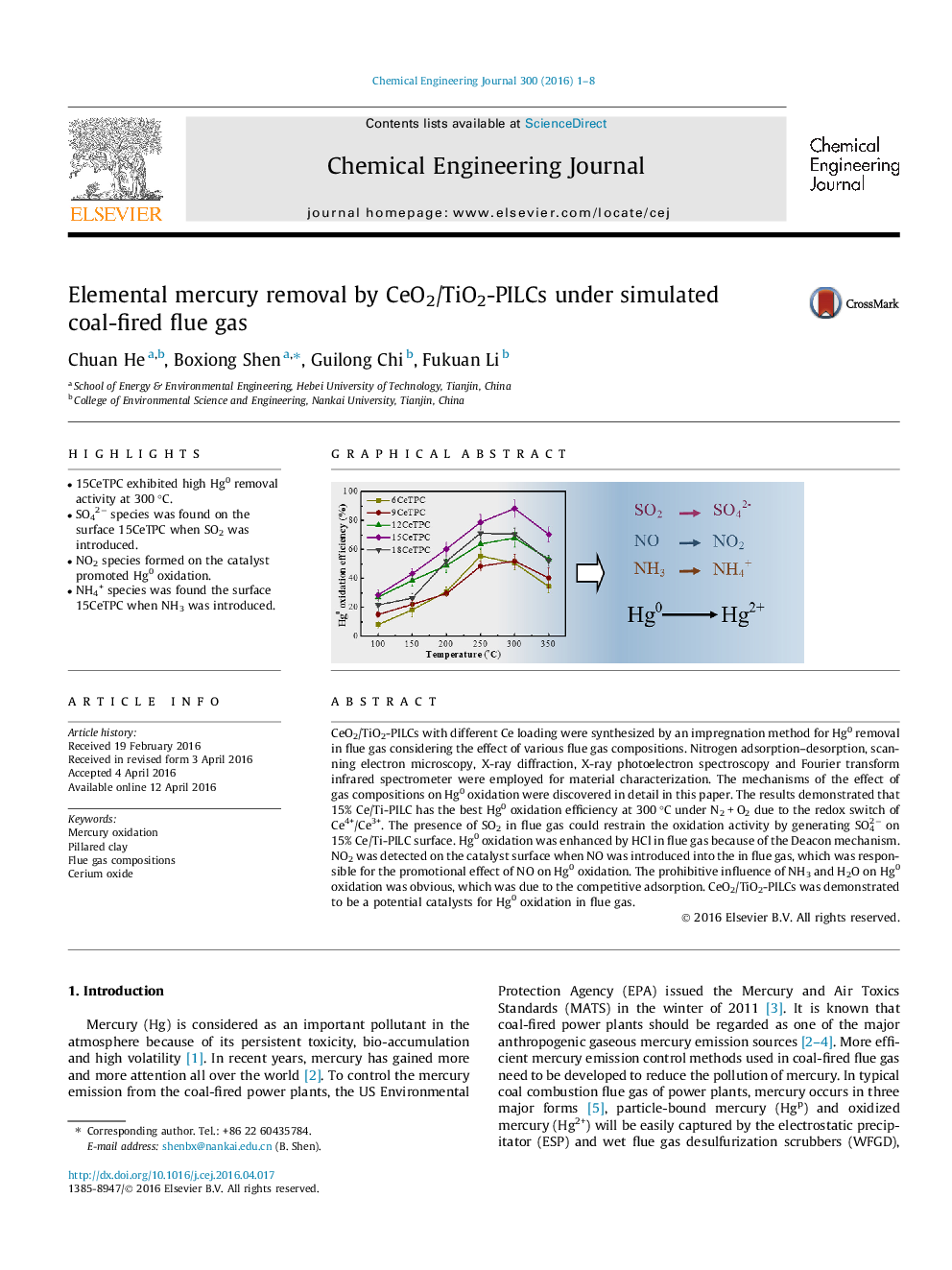| Article ID | Journal | Published Year | Pages | File Type |
|---|---|---|---|---|
| 145418 | Chemical Engineering Journal | 2016 | 8 Pages |
•15CeTPC exhibited high Hg0 removal activity at 300 °C.•SO42− species was found on the surface 15CeTPC when SO2 was introduced.•NO2 species formed on the catalyst promoted Hg0 oxidation.•NH4+ species was found the surface 15CeTPC when NH3 was introduced.
CeO2/TiO2-PILCs with different Ce loading were synthesized by an impregnation method for Hg0 removal in flue gas considering the effect of various flue gas compositions. Nitrogen adsorption–desorption, scanning electron microscopy, X-ray diffraction, X-ray photoelectron spectroscopy and Fourier transform infrared spectrometer were employed for material characterization. The mechanisms of the effect of gas compositions on Hg0 oxidation were discovered in detail in this paper. The results demonstrated that 15% Ce/Ti-PILC has the best Hg0 oxidation efficiency at 300 °C under N2 + O2 due to the redox switch of Ce4+/Ce3+. The presence of SO2 in flue gas could restrain the oxidation activity by generating SO42− on 15% Ce/Ti-PILC surface. Hg0 oxidation was enhanced by HCl in flue gas because of the Deacon mechanism. NO2 was detected on the catalyst surface when NO was introduced into the in flue gas, which was responsible for the promotional effect of NO on Hg0 oxidation. The prohibitive influence of NH3 and H2O on Hg0 oxidation was obvious, which was due to the competitive adsorption. CeO2/TiO2-PILCs was demonstrated to be a potential catalysts for Hg0 oxidation in flue gas.
Graphical abstractFigure optionsDownload full-size imageDownload as PowerPoint slide
